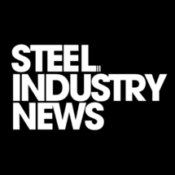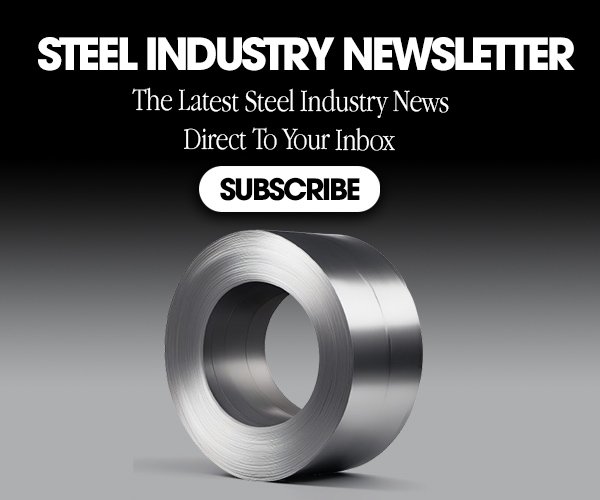The steel industry is experiencing significant shifts in pricing strategies as major players adjust their positions in response to market conditions, economic factors, and policy changes. Three key players – Cleveland-Cliffs, U.S. Steel, and Nucor – have recently announced new pricing targets, reflecting the complex landscape of the steel market in early 2025. This article delves into the intricate web of factors influencing steel pricing, including the reintroduction of Trump-era tariffs and their potential impact on the industry.
Major Players’ Pricing Strategies
Nucor’s Competitive Positioning
Nucor, has taken a slightly different approach. The company has set a benchmark price of $775/mt for its hot rolled coil (HRC) products across all production sites, with the exception of CSI, where the price will be $835/mt. This pricing strategy, effective from Feb 3, 2025, positions Nucor slightly below its competitors while still reflecting an upward trend in steel prices.Nucor’s strategy comes in the context of recent financial challenges:
- The company experienced a 60% decline in net profit during the fourth quarter of 2024.
- Annual revenue decreased by 53% to $2.32 billion in 2024.
- Despite these setbacks, CEO Leon Topalian expressed cautious optimism about a recovery in the U.S. steel market in 2025, driven by upcoming infrastructure projects and favorable economic trends.
Nucor’s slightly lower pricing strategy may be an attempt to maintain market share while still benefiting from the overall upward trend in steel prices. The company’s extensive network of mini-mills and its reputation for operational efficiency could allow it to remain profitable even at a lower price point than its competitors.
Cleveland-Cliffs Aims High
Cleveland-Cliffs has taken a bold step by announcing plans to increase prices for hot-rolled (HR) coil to $800 per short ton (st). This move represents a $50/st increase from their previous list price of $750/st, which had been in place since mid-September 2024. The company cited “recent trends favorable to overall market perspective” and improved order flows as justifications for the price hike. Key points of Cleveland-Cliffs’ strategy:
- The increase coincides with the opening of their February order book for both contract and spot tons of HR.
- They have closed their January HR order book, allowing only contractual obligations to be booked in compliance with volume agreements.
- This pricing strategy suggests confidence in market demand and an attempt to set a new benchmark for the industry.
Cleveland-Cliffs’ aggressive pricing move may be partly influenced by their recent investments in more efficient production technologies and their strong position in the automotive steel market. The company’s CEO, Lourenco Goncalves, has been vocal about the need for higher steel prices to support ongoing investments in greener technologies and maintain profitability in the face of rising input costs.
U.S. Steel Matches the Pace
U.S. Steel has also announced a price of $800/ton, aligning with Cleveland-Cliffs’ pricing. This move suggests a coordinated industry effort or a response to similar market assessments. U.S. Steel’s decision to match Cleveland-Cliffs’ price point is likely influenced by several factors:
- The company’s recent investments in electric arc furnace (EAF) technology, which allows for more flexible production and potentially lower costs.
- A strategic shift towards higher-value products, particularly in the automotive and energy sectors.
- The anticipation of reduced import competition due to the reintroduction of tariffs.
U.S. Steel’s CEO, David Burritt, has emphasized the company’s focus on operational efficiency and market responsiveness, which may explain their quick alignment with the new pricing benchmark.
Domestic Mill Potential to Raise Pricing
The reduced import competition creates a favorable environment for domestic steel mills to increase their prices:
- Market Power: With fewer competitive imports, domestic mills have greater market power to set prices. This could lead to a series of price increases throughout the year as mills test the market’s tolerance for higher prices.
- Capacity Utilization: The tariffs are likely to boost capacity utilization rates at domestic mills. Higher utilization rates typically correlate with stronger pricing power.
- Cost Pass-Through: Mills may use this opportunity to pass on increased costs (e.g., energy, raw materials) to customers more easily, citing the need to maintain profitability in a changing market landscape.
- Investment Justification: Higher prices could be justified as necessary to fund investments in new technologies and capacity expansions, which domestic producers argue are essential for long-term competitiveness.
Overall Effect on Steel Pricing Throughout the Year
The reintroduction of tariffs is expected to have a significant impact on steel pricing dynamics throughout the rest of the year:
- Initial Price Surge: In the short term, we may see a rapid increase in steel prices as the market adjusts to the new trade environment. This could push prices beyond the recently announced levels of $800/ton.
- Stabilization at Higher Levels: After the initial surge, prices are likely to stabilize at higher levels compared to pre-tariff periods. The exact level will depend on factors such as domestic demand, production costs, and the degree of import reduction.
- Increased Price Volatility: The market may experience increased price volatility as it adjusts to the new normal. Factors such as changes in global economic conditions, shifts in demand from key sectors, and potential retaliatory measures from other countries could all contribute to price fluctuations.
- Sector-Specific Impacts: Different steel-consuming sectors may experience varying impacts. For example, the automotive and construction industries, which are significant steel consumers, may face higher input costs, potentially leading to price negotiations and long-term contract adjustments.
- Regional Price Differences: The impact of tariffs may vary by region, with areas more dependent on imports potentially seeing larger price increases. This could lead to shifts in regional competitiveness and supply chain adjustments.
- Potential for Tariff Rate Quotas: There is a possibility that the government may introduce tariff rate quotas (TRQs) for certain countries or products, which could moderate the price impact for specific steel types or grades.
Market Outlook and Influencing Factors
The pricing strategies of major steel producers and the reintroduction of tariffs are set against a backdrop of complex market dynamics:
- Demand Fluctuations: The steel industry is facing mixed demand signals. While some sectors like automotive and agriculture show uncertainty, infrastructure projects are expected to drive demand in 2025.
- Supply Constraints: Production could face constraints due to raw material costs and regulatory factors, potentially influencing steel prices.
- Global Economic Factors: The pace of global economic growth significantly affects steel demand, with construction and manufacturing industries playing crucial roles.
- Technological Innovation: Advancements in steel production technologies, including automation and AI-driven processes, may help stabilize prices in the long term.
- Sustainability Efforts: Environmental regulations are encouraging manufacturers to adopt green technologies, which may require investment but could lead to future savings and competitive advantages.
- Geopolitical Tensions: Ongoing geopolitical issues, including trade disputes and regional conflicts, could disrupt global supply chains and impact steel pricing.
- Currency Fluctuations: Changes in exchange rates, particularly the strength of the U.S. dollar, can affect the competitiveness of domestic steel versus imports, even with tariffs in place.
Price Forecasts and Expert Opinions
Despite the optimistic pricing targets set by major producers and the potential impact of tariffs, some analysts predict a more conservative outlook:
- S&P Global Commodity Insights forecasts the average annual Midwest HRC price in 2025 to decline to $748/st, down 3.5% from the estimated 2024 price of $778/st.
- The Market Consulting Intelligence (MCI) projection suggests that steel prices will continue to fall in early 2025, potentially reaching a trough around mid-2025 or end-2025.
However, these forecasts may not fully account for the recent pricing announcements by major producers and the reintroduction of tariffs, which could set a new floor for market prices. Some industry experts argue that the combination of tariffs and coordinated pricing strategies by major producers could lead to sustained higher prices throughout 2025.
Conclusion
The steel pricing landscape in 2025 is marked by strategic moves from major producers aiming to set higher benchmarks, now bolstered by the reintroduction of Trump-era tariffs. Cleveland-Cliffs and U.S. Steel’s $800/ton target, along with Nucor’s slightly lower $760/ton price, indicate an industry push towards price recovery. The surging of pricing in a commodity like steel could raise inflation and reduce the likely hood of interest rate reductions by the Federal Reserve. The steel industry’s ability to balance higher prices with maintaining demand, investing in innovation, and addressing sustainability concerns will be crucial in navigating the challenges and opportunities presented by this new market landscape.
If you enjoyed this article check out some of our other articles on the subject:
Canacero Warns of Potential Trade Conflict: US Steel Exports Threaten Mexican Industry
The U.S. Steel Saga: Ancora’s Bold Move to Reshape America’s Iconic Steelmaker
Cleveland-Cliffs and Nucor’s Potential Acquisition of U.S. Steel
Biden Blocks $14.9 Billion Sale of U.S. Steel to Japan’s Nippon Steel, Citing National Security Concerns
Nippon Steel Agrees To Sell Calvert Stake for $1 to Facilitate U.S. Steel Acquisition
U.S. Steel-Nippon Steel Merger: Arbitration Looms as Global Hurdles have Cleared
U.S. Steel “Corrects the Record” on Transaction with Nippon Steel
EU Approves Nippon Steel – U.S. Steel Acquisition, US DOJ Review Ongoing
Nippon Steel U.S. Steel Acquisition Update
Automakers Challenge Potential Cleveland-Cliffs-U.S. Steel Merger
Nippon Steel Determined to Acquire U.S. Steel Despite Scrutiny
Biden and Trump Oppose Nippon Steel’s U.S. Steel Acquisition
U.S. Steel Acquisition: Nippon Embraces USW Challenge
Be sure to subscribe to the Steel Industry Email Newsletter below for the latest steel related news direct to your inbox!









